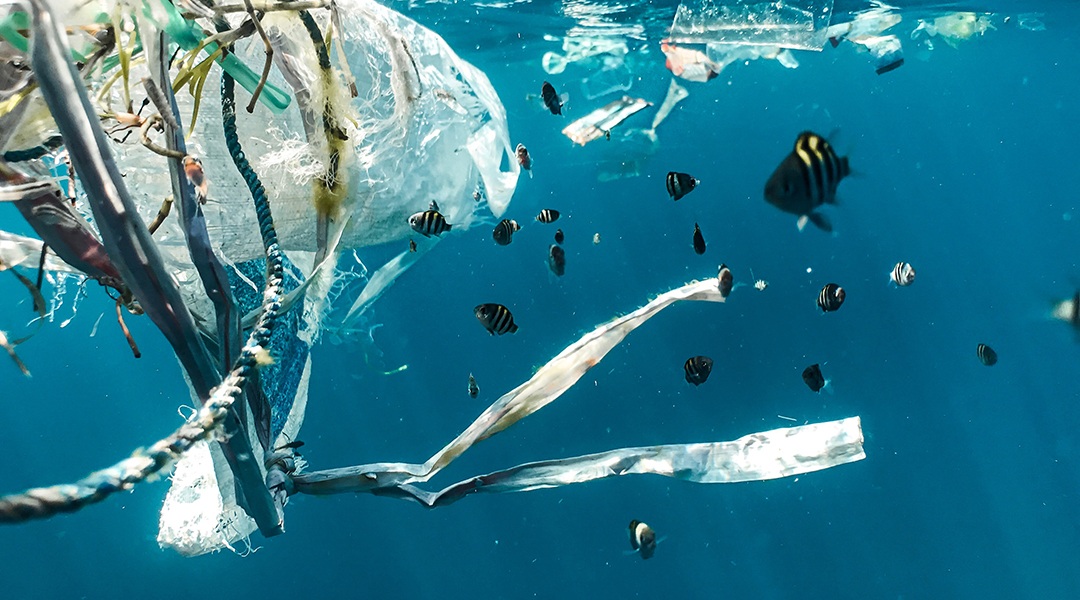As plastic consumption continues to increase steadily, the majority of the subsequent waste finds its way to landfills, the environment, or is incinerated, all of which have significant negative impacts on the environment.
Both the production of plastics and their incineration cause greenhouse gas emissions, contributing to climate change. On the other hand, when plastic waste ends up in the environment, it can have severe consequences. Worryingly, the effects of microplastics — plastic particles less than five millimeters in diameter — on ecosystems and entering the food chain as a result of being taken up by organisms are still not fully assessed.
The recycling of plastic, which prevents the production of new plastic by creating secondary plastic, could help offset some of these risks. However, it is estimated that currently only 10% of product manufacturing on a national scale makes use of secondary plastics.
What is mechanical recycling?
One way of boosting the circularity of plastics would be to increase mechanical recycling, the process of recovering plastic waste without altering its chemical composition, by sorting, washing, drying, grinding, re-granulating, and compounding.
A new paper published in The Journal of Industrial Ecology by Magdalena Klotz from the Department of Civil, Environmental and Geomatic Engineering at ETH Zurich looks at the extent to which mechanical recycling can be increased by different measures, taking the whole material cycle into consideration.
“We investigated which measures may, on the one hand, lead to a bigger amount of secondary plastics producible and, on the other hand, guarantee that these secondary plastics are able to substitute primary plastics in product manufacturing,” Klotz said. “The latter is very relevant if considerable environmental benefits are to be achieved by recycling because it avoids the impacts of primary production.”
Klotz explained that the limits of mechanical recycling are poorly understood. This is partly because it is usually applied to a mix of diverse plastics, and within just one kind of plastic, there are countless different plastic types — called plastic grades. These feature different configurations of the polymer chains from which plastics are made, with varying characteristics, such as length, and containing different additives.
“It is practically impossible to recycle each of these myriad of plastics separately. Therefore, a mixing of different plastics occurs, which means that the resulting secondary plastics have different properties than the input materials,” she continued. “For example, if a green, a blue, and a pink plastic bottle are recycled together, the resulting secondary material will be greyish. This is a relevant limitation of mechanical plastic recycling.”
Good news and bad news
To reach their results, Klotz and her co-authors performed an extensive analysis of the plastic recycling situation in Switzerland, which is comparable to that of other European countries.
They considered 11 plastic types in 69 product groups, both consumed and arising as waste in Switzerland, and also factored in future scenarios involving increased waste collection, improved product design, and improved waste sorting.
This allowed them to quantify the amounts of plastic consumption, waste, and secondary material utilizable in product manufacturing for the year 2040. With regard to the results the team achieved, there is good news and bad news.
“One could say there were two major findings from our study, a negative and a positive one,” Klotz said. “The first is that the mass potential of mechanical recycling seems to be rather limited — the maximum recycling rate achievable in the mid-term future by around 2040 seems to lie around 30%.”
She pointed out that the team only considered secondary material that is useful as a substitute for primary plastics in product manufacturing to calculate this recycling rate. This is because it is via the substitution of primary plastics that recycling leads to a reduction in the environmental impact.
Klotz explained that achieving even this modest recycling rate would require substantial system changes, including introducing more specific waste sorting systems.
“The good news is that this restricted recycling rate of 30% is still able to reduce the plastics’ carbon footprint by one quarter compared to no recycling for the system we considered,” she added.
The team will now investigate the use of chemical recycling to tackle waste that is difficult to recycle mechanically, assessing if this would be beneficial over incineration.
“This research may help the general public understand that their contribution to plastic recycling via waste collection for recycling is required as one step in the recycling chain if significant environmental benefits are to be achieved,” Klotz said. “At the same time, it can show how challenging it is to increase plastic recycling, so if people carry out environmentally harmful activities that are easier to reduce than it is to increase plastic recycling, they may be motivated by this study to do that.”
According to Klotz, this illustrates that it makes sense how individuals and governments to prioritize approaches that lead to high environmental impact savings with the lowest efforts.
“To reach our climate targets, we probably need to implement a number of measures, each of which reduces our climate change impacts to a certain extent, plastic recycling being just one of them,” she concluded.
Reference: Magdelena Klotz, et al., Potentials and limits of mechanical plastic recycling, Journal of Industrial Ecology (2023). DOI: 10.1111/jiec.13393
Feature image: Naja Bertolt Jensen on Unsplash

















